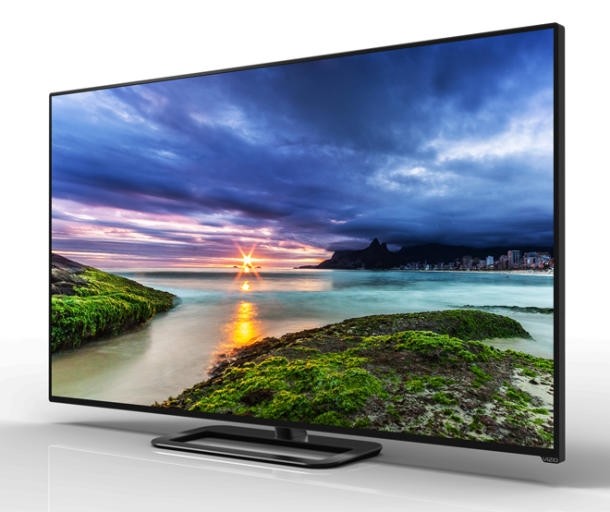Vizio has announced some new additions coming to its TV lineup at CES 2014 in the form of the new 4K P Series and the new, high end Reference Series.
The consumer-grade P Series (seen to the right) will be priced aggressively and will come with some features usually only found in options that aren't. The line will be available in 50, 55, 60, 65 and 70-inch configurations and will feature a 64 LED zone backlight and advanced dimming features. This should generally mean we will get a nice vibrant picture quality, which based on reports from the show floor, appears to be the case. 
For comparison sake, Samsung and Sony's 55-inch 4K offerings are listed at around $3000 right now, and you can grab a 50-inch Seiki UHD TV for as low as $700 or so. This could mean wee see Vizio's aggressive pricing land the 50-inch model P Series somewhere in the ~$1500+ range.
The P Series supports 802.11ac Wi-Fi with dual band MIMO support, has five HDMI inputs, and will allow for 4K streaming from compatible apps like Netflix. It can also display games at up to 120 FPS and film at 24 and 48 frames per second.
The Reference Series is aimed at the high end market, likely not the kind of product you'll see in your traditional retail store, and are said to be some of the best panels Vizio has ever offered. They will be capable of 4K and will feature HDR (High Dynamic Range) technology. HDR allows for a much more realistic contrast range that more accurately reproduces the details from the source footage, according to Vizio. The company has not mentioned pricing on the Reference line as of yet.
One thing the company's new displays won't be coming with is 3D. The technology that seemingly latched itself on to pretty much every HDTV maker out there at some point or another, now looks like it's getting left in the dust by Vizio. None of its new models will come with 3D technology, a move the company says it made simply because people don't use it. As CES rolls on we will have to see if 3D support is something other manufacturers are leaving behind as well.